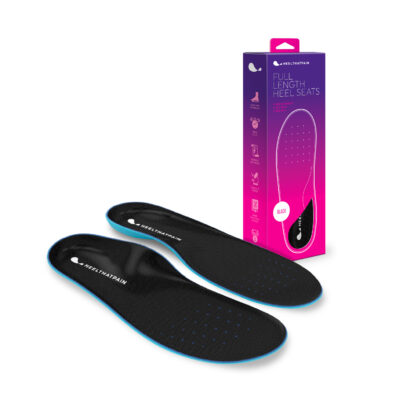Plantar Fasciitis and Basketball
Give Your Arches the Assist They NeedThree seconds on the clock. The game is yours with a mad dash down the length of the court.
Will you score at the buzzer as the crowd (or at least your Saturday basketball buddy) goes wild? Or will heel pain stop you in your tracks?
Heel Pain and Basketball: What’s the Connection?
Whether you’re a weekend warrior or a player in the NBA, the game of basketball carries some unique risk factors for heel pain and plantar fasciitis (pronounced PLAN-tar fashee-EYE-tiss). This condition, which may be chronic or acute, develops when the long, flat ligament on the bottom of your foot (also known as the plantar fascia) is damaged or overused. Over time, small tears develop, leading to inflammation and pain that can be sharp or dull but is reproduced by flexing the toes upward (dorsiflexion) and tensing the arch of your foot.
Basketball players are especially prone to the painful condition for the following reasons:
- Constant running: Running can exert a force of up to six times an individual’s body weight. Meaning, if you weigh 200 lbs, running can place a force of up to 1200 lbs on your arches.
- Insufficient stretching: Failing to stretch before a game–and throughout the week–can leave you with a tight, inflexible plantar fascia and surrounding muscles. This leaves muscles and ligaments poorly prepared to stand up to the significant impact they’ll endure during a game.
- Torque: Basketball is a game of rapid-fire changes in position and speed. Combine that torque with major impact and a weak or tight plantar fascia? Small tears begin to appear.
- Hard playing surfaces: Whether you play on an indoor court or a driveway, a hard surface combined with high torque and speed can spell disaster for your heels.
- Improper footwear: The popularity of extremely lightweight shoes in basketball has led to quicker footwork–and a lack of support in many cases. Shoes that are used for basketball also tend to wear out more quickly, under heavy force and sweat.
- Extra weight: Like the general population, many basketball aficionados carry a few extra pounds. This extra weight adds additional impact to the heel and arch.
Symptoms of Plantar Fasciitis on the Court
Plantar Fasciitis usually develops gradually. The first symptoms you notice may not appear on the basketball court, but rather as pain or tightness in the first steps you take after getting out of bed in the morning or when taking the first steps after sitting for a long period of time. These early signs are an indication of a compromised plantar fascia. If left untreated, the condition will become progressively worse, resulting in any of the following symptoms:
- Redness, inflammation, and tenderness to the touch
- Sharp, stabbing pain while walking or running
- Swelling of the foot and heel
- Stiffness and pain that may improve after a few steps but gets worse after periods of inactivity
In athletes, plantar fasciitis can also lead to unhealthy changes in gait (the way the feet strike the ground) as the body attempts to compensate for the damaged fascia, which can cause additional symptoms and injury to other parts of the foot, ankle, and legs.
Treating Heel Pain from Basketball
If you experience heel pain after a game of basketball–or start to notice chronic heel pain (especially with those first few steps in the morning), you may have plantar fasciitis. This common condition, which prompts approximately one million doctor’s visits annually and accounts for between 5 and 10 percent of all athletic injuries, develops gradually and can become severe if left untreated.
So, how can you treat (and even prevent) the disabling heel pain from plantar fasciitis while staying in the game? Most cases of plantar fasciitis–especially when addressed early–can be successfully resolved within a few months using simple remedies at home and on the court:
- Wear the right shoes: Basketball shoes–even good ones–can become worn out quickly because of high impact and sweat. Throw out older pairs of shoes that no longer offer flexible, thick soles and good heel support.
- Fortify your favorite shoes: Lightweight basketball shoes may not offer much in the way of thick, cushioned soles–leaving your arches to absorb a lot of impact. Orthotic inserts, made especially to treat plantar fasciitis, are lightweight and fit into your favorite pair of basketball shoes for the support and cushioning you need.
- Rest: Never play through the pain, and give your feet and arches ample time to rest between games. If you notice heel pain, give your feet a break to allow damaged arch tissue to heal.
- Ice regularly: This simple remedy can go a long way toward calming inflammation and pain. Icing twice a day for 10-20 minutes can promote healing and reduce pain in the heels, ankles, and legs.
- Use NSAIDs as needed: If the pain from plantar fasciitis becomes acute, periodic use of NSAIDs like ibuprofen can reduce inflammation, swelling, and pain while you follow up with other treatment methods.
- Stretch often: Stretching the feet, heels, calf muscles, and leg muscles will help with both prevention and healing. Tight, inflexible muscles in all parts of the foot and legs can quickly lead to tearing, strain, and damage. Begin every game with loose, flexible muscles to properly absorb impact.
Don’t let heel pain keep you on the sidelines. With the right footwear, support from orthotic inserts, proper rest, and regular icing and stretching, you’ll be on the rebound and back on the court in no time.






